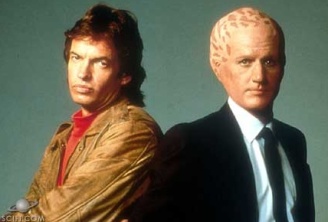 “I yearn to rely on a higher will. I fear what I am capable of in its absence.” – E.B. Farnum
“I yearn to rely on a higher will. I fear what I am capable of in its absence.” – E.B. Farnum
Yeah, yeah, everyone’s been talking about that show with the dragons and thrones this week, but I’ve been far more engaged by a mud-soaked, profane and utterly human deep dive into the mire of history.
I’ve been rewatching the definitive western saga “Deadwood” in preparation for the long-awaited movie conclusion coming later this month, and while I generally enjoy that “Thrones” stuff, I’ll take the gin and grit of creator David Milch’s unblinking author’s eye in “Deadwood” every time.
The show’s incredibly dense writing and plotting make it one you have to pay close attention to – every scene is packed with allusions and the bustling, chaotic energy of a gold rush town slowly being pulled into the American expansion west. “Deadwood” populated its South Dakota town with a Noah’s ark of battered, eccentric characters during its three-season run from 2004-2006, including Ian McShane’s indelible Al Swearingen and Timothy Olyphant’s flinty-eyed Sheriff Bullock. I could list a dozen terrific characters from the show and have a dozen more left to spare.
But yet, the one I keep coming back to, captivated, on my recent rewatch of the series is perhaps its most vile – William Sanderson’s oily, unctuous and verbose E.B. Farnum, Deadwood’s powerless “Mayor” and hotel owner. Farnum is the grand fool of Milch’s Shakespearean tapestry in “Deadwood,” always cringing and yet calculating at the same time, a grandiloquent sleazebag of a man.
Sanderson’s terrific, underrated performance of this Wild West Uriah Heep is hilarious and sad, as Farnum is constantly humbled and deserves every bit of it. There are times when you might feel a twinge of pity for his bluster, but then he spouts more racist rhetoric or conniving kiss-assery and you’re back to despising him again. He’s a grifter whose poetic, meandering soliloquies are often breathtakingly beautiful, yet they’ll never be appreciated because of the toadying weasel they’re being uttered by.
“Deadwood” is a show about man’s pull between civilisation and freedom, ambitions and realities. America’s history is full of a rich tapestry of big-mouthed, oblivious dreamers who puff themselves up full of vanities and talk their way to success. As many of them fail as succeed, but the point is in the striving.
E.B. Farnum, in his hapless, malicious way, is perhaps the greatest American in TV history.

 It wasn’t for nothing that one of his best albums is called A Man Called Destruction. He was the spirit of punk rock incarnated in a teen crooner’s body.
It wasn’t for nothing that one of his best albums is called A Man Called Destruction. He was the spirit of punk rock incarnated in a teen crooner’s body. The best science fiction holds up a mirror to the world we live in. “Alien Nation” was never quite a household name, but the brief cult sci-fi franchise of the late ‘80s still holds up today.
The best science fiction holds up a mirror to the world we live in. “Alien Nation” was never quite a household name, but the brief cult sci-fi franchise of the late ‘80s still holds up today. Fortunately, that wasn’t the end for “Alien Nation,” which debuted as a series on Fox TV in September 1989. It’s in the short-lived TV series where “Alien Nation” really blossomed, spearheaded by Kenneth Johnson, creator of another great ’80s cult sci-fi series, “V.”
Fortunately, that wasn’t the end for “Alien Nation,” which debuted as a series on Fox TV in September 1989. It’s in the short-lived TV series where “Alien Nation” really blossomed, spearheaded by Kenneth Johnson, creator of another great ’80s cult sci-fi series, “V.” The story carries on with the same odd-couple detective duo from the movie, but recast and given more satisfying depth. Gary Graham’s Detective Sikes is all ’80s mullet and brash trigger-happy cop cliches at first, but the character becomes convincingly more sympathetic and layered as the series progresses. Eric Pierpoint is excellent as Francisco, who balances personal courage with frequent frustrations over the racism he encounters and the culture he’s left behind. The story of his family trying to fit in – his wife, teenage son and daughter – is often more fascinating than the TV show’s cop mystery of the week storyline.
The story carries on with the same odd-couple detective duo from the movie, but recast and given more satisfying depth. Gary Graham’s Detective Sikes is all ’80s mullet and brash trigger-happy cop cliches at first, but the character becomes convincingly more sympathetic and layered as the series progresses. Eric Pierpoint is excellent as Francisco, who balances personal courage with frequent frustrations over the racism he encounters and the culture he’s left behind. The story of his family trying to fit in – his wife, teenage son and daughter – is often more fascinating than the TV show’s cop mystery of the week storyline. It all started with a few mixtapes.
It all started with a few mixtapes. My first exposure to
My first exposure to